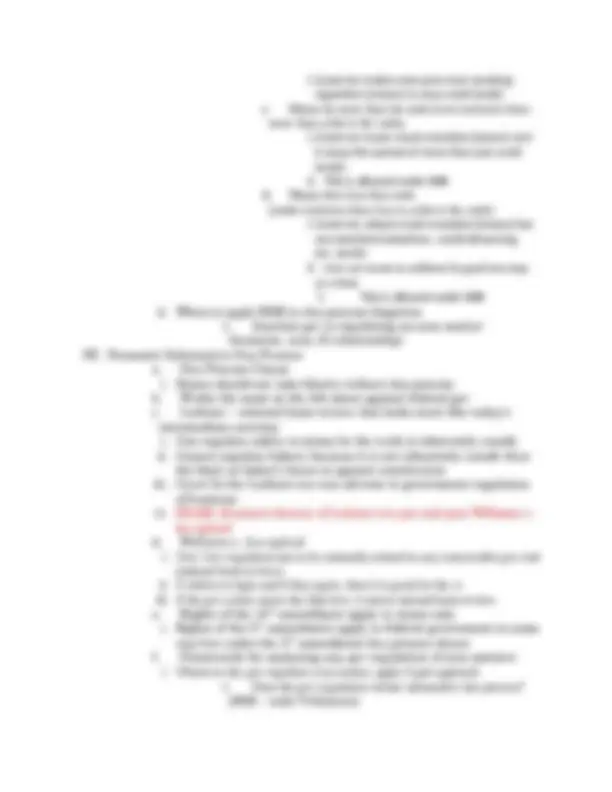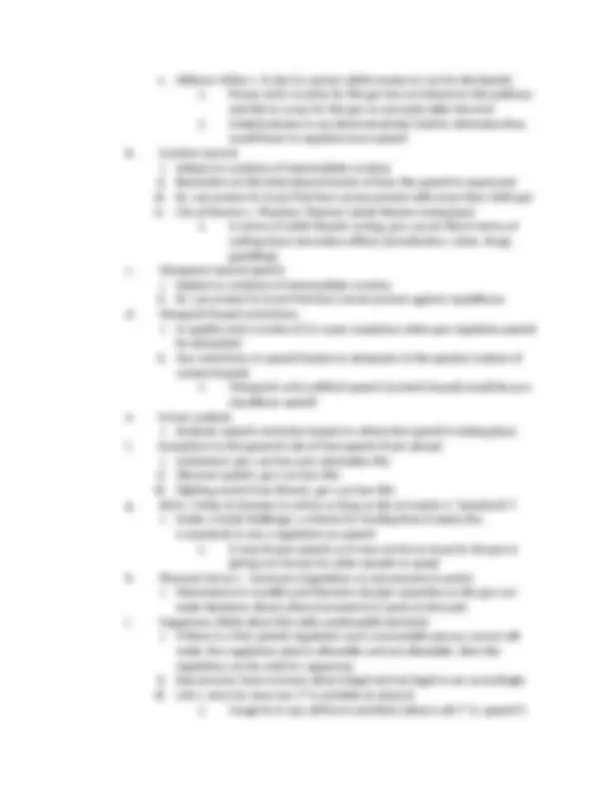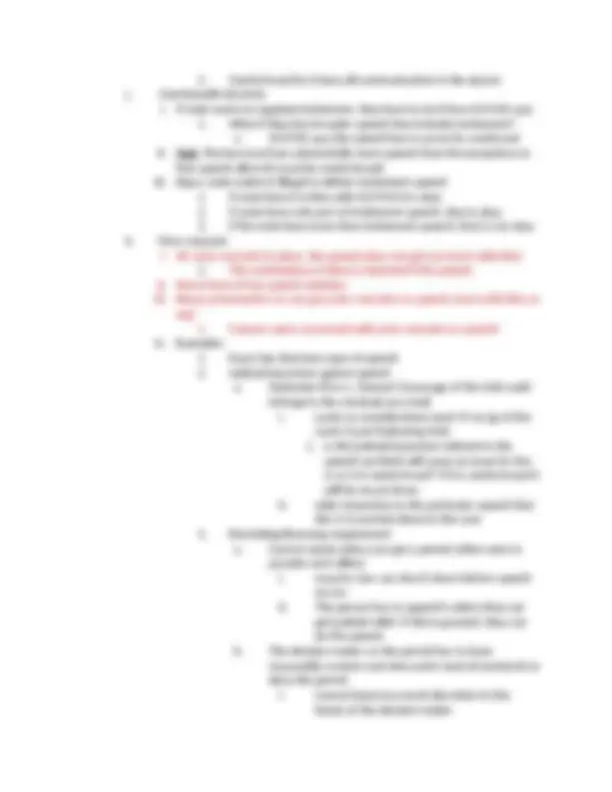








































Study with the several resources on Docsity

Earn points by helping other students or get them with a premium plan


Prepare for your exams
Study with the several resources on Docsity

Earn points to download
Earn points by helping other students or get them with a premium plan
Community
Ask the community for help and clear up your study doubts
Discover the best universities in your country according to Docsity users
Free resources
Download our free guides on studying techniques, anxiety management strategies, and thesis advice from Docsity tutors
An in-depth analysis of the legal concept of 'strict scrutiny' as it applies to government actions that infringe upon race-based equal protection and free speech. various aspects of strict scrutiny, including the importance of narrowly tailoring means to achieve government interests, the application of strict scrutiny to various contexts such as affirmative action and property rights, and exceptions to free speech protections. It also discusses the importance of the marketplace of ideas and the role of the courts in balancing competing interests.
Typology: Study notes
1 / 46

This page cannot be seen from the preview
Don't miss anything!







































I. Structure of Rights a. Bill of rights i. Adoption of a bill of rights was the condition that the thirteen original states imposed in exchange for ratification of the Constitution. ii. Defenders of the Constitution feared that the enumeration of specific rights would imply the exclusion of others, critics of the Constitution warned that, without these express protections, the federal government would have too much power. iii. The critics prevailed, and the states immediately adopted ten of the twelve amendments proposed by the first Congress. iv. At first, the limits on government action in the Bill of Rights only applied to the federal government, and not to state or local governments, or their officers b. Slaughterhouse cases i. The Thirteenth Amendment solely prohibits slavery as experienced by Africans in the United States before the Civil War, and the Fourteenth Amendment (which is largely geared towards the protections of emancipated slaves and African Americans) only protects rights guaranteed by the United States and not individual states
United States and not by the individual states. The rights guaranteed by the United States are very limited and historically do not include civil rights. c. We have privileges and immunities as state and federal citizens i.Derives from relationship to state and US ii. State P&I are expansive and it derives from state primacy vi. Doctrine of Incorporation
i. Governor makes everyone start smoking cigarettes (means) to stop covid (ends) c. Means do more than the ends (over-inclusive/does more than achieve the ends) i. Governor issues mask mandate (means) and it stops the spread of more than just covid (ends) ii. This is allowed under RBR d. Means does less than ends (under-inclusive/does less to achieve the ends) i. Governor adopts mask mandate (means) but we need immunizations, social distancing, etc. (ends) ii. Gov can move to achieve its goal one step at a time
a. Drop in Lochner language
a. If not related, gov is just trying to disadvantage a politically unpopular group b. Ex: do same sex couples have fund. Right to marry like straights?
c. Triggers equal protection analysis iii. De jure segregation: exists in the law (schools ordered to segregate) intentional
b. Identify racial minority w/ precision tailors new remedies with precision to match the issue i. Higher education affirmative action i. Designed to achieve compelling gov interest of diversity in higher edu ii. In designing the program, the gov cannot assign pts by race and cannot set aside racial quotas iii. Remedial solution in search of a program (aimed at diversity) iv. Issue of it being remedial affirmative action while looking like edu affirmative action v. Nothing is preventing a public school from adopting a remedial program if it can show that it had an uncon issue with race in the past vi. Fisher v. UT Austin
i. Age discrim gets RBR ii. Ct says there are ppl under 50 who cannot protect and ppl over 50 who can protect
ii. Gov argued that it’s a right to marry person of the same sex and it is not deeply rooted in hist & trad iii. Is the right to marry one other person deeply rooted in hist & trad?
1. Can interpret it in a lot of ways (helped π say the commonality has always been the right to marry one other person) 2. Gov says it changed a lot but never to include the right to marry the same sex b. If the right already exists i. First step: SDP right exists ii. Second step: Under equal protection principles , we must include a previously excluded group in that right 1. Applying a Romer, Moreno v. Evans, Calyborne POV 2. Obergefell : gov has no valid reason for excluded same sex couples from marriage so it must include them
b. Pre viability, state cannot place undue burden on access to abortion i. Parental notification is undue burden ii. Parental notification with judicial override is not an undue burden
iii. Reynolds v. Sims (1 person 1 vote)
a. If the gov takes life, liberty, or property, it must do so with due process of law (somewhat like the takings clause) b. Must ask: i. What is life, liberty, or property